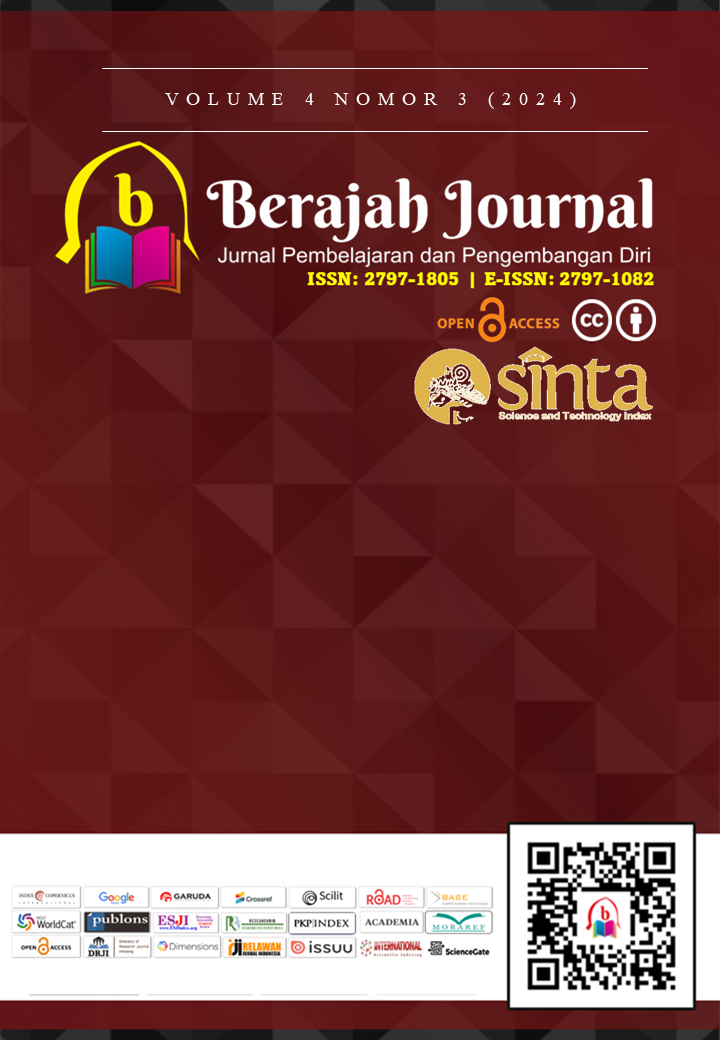KOLABORASI BAHASA DAN KULINER: MEMPERKUAT DAYA TARIK WISATA KULINER DESA
DOI:
https://doi.org/10.47353/bj.v4i3.346Keywords:
language, culinary, tourist attractionAbstract
In this era of globalization full of competition, Serangan Village needs to continue to innovate and increase its attractiveness to attract more tourists. One promising strategy is to combine language and cuisine, creating a unique and unforgettable culinary tourism experience. The research method used in this research is a qualitative research method with data collection techniques, namely observation, interviews and documentation. The results of this research show that community participation through language and culinary arts is able to strengthen the tourist attraction for culinary delights in Serangan Village. The right strategy could be to empower POKDARWIS, especially those who can speak English, in collaborative language and culinary activities in Village.
Downloads
References
Gudykunst, W. B., & Kim, Y. Y. (2003). Communicating with Strangers: An Approach to Intercultural Communication. McGraw-Hill Education.
Ham, S. H. (1992). Environmental Interpretation: A Practical Guide for People with Big Ideas and Small Budgets. Fulcrum Publishing Henderson,
J. C. (2009). Food Tourism Reviewed. British Food Journal, 111(4), 317-326.
Kolb, D. A. (1984). Experiential Learning: Experience as the Source of Learning and Development. Prentice Hall.
Lew, A. A. (1987). A Framework of Tourist Attraction Research. Annals of Tourism Research, 14(4), 553-575.
Mak, A. H., Lumbers, M., Eves, A., & Chang, R. C. (2012). Factors Influencing Tourist Food Consumption. International Journal of Hospitality Management, 31(3), 928-936.
Nugraha, I. G. P., & Agustina, M. D. P. (2021). Strategi Pengelolaan Desa Wisata Serangan Dalam Mewujudkan Destinasi Wisata Yang Berkualitas. Widya Manajemen, 3(2), 178–185. https://doi.org/10.32795/widyamanajemen.v3i2.1738
Oka, I. M. D., Winia, I. N., & Pugra, I. W. (2015). Pemberdayaan Masyarakat Melalui Pelatihan Pengolahan Masakan Seafoods Untuk Menunjang Pariwisata Di Desa Wisata Serangan. Bhakti Persada : Jurnal Aplikasi IPTEKS, 1(1), 62. http://ojs.pnb.ac.id/index.php/BP/article/view/250
Pine, B. J., & Gilmore, J. H. (1999). The Experience Economy: Work Is Theatre & Every Business a Stage. Harvard Business School Press.
Richards, G. (1996). Cultural Tourism in Europe. CAB International.
Sinclair, M. T. (1998). Tourism and Economic Development: A Survey. The Journal of Development Studies, 34(5), 1-51.
Vygotsky, L. S. (1978). Mind in Society: The Development of Higher Psychological Processes. Harvard University Press.
Downloads
Published
How to Cite
Issue
Section
License
Copyright (c) 2024 I Gusti Ayu Melistyari Dewi, Ni Putu Isha Aprinica, I Ketut Muliadiasa, Ida Ayu Gayatri Kesumayathi, Arik Agustina

This work is licensed under a Creative Commons Attribution 4.0 International License.




























